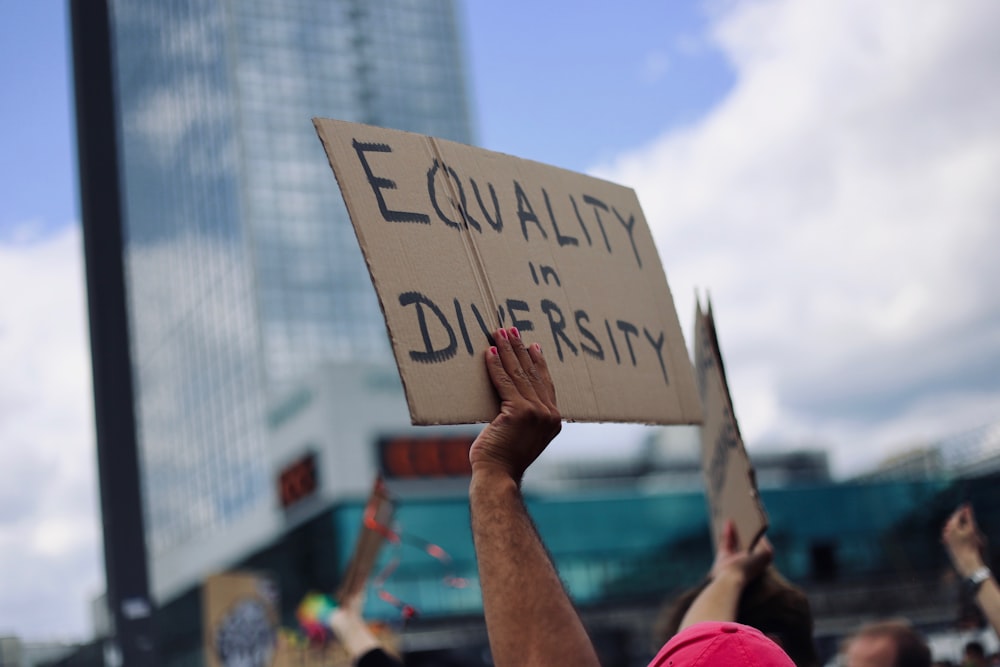
We are currently living in a post-feminist era; we can see this when reflecting on the progress women have made in the mobilization of the feminist movement and by challenging the patriarchal power structure that divides men and women. However, despite these major advances that women have made over the last century, gender inequality and discrimination still exists today, and the risks posed to the modern women are still as pressing as they once were. The risks for communities, companies, and all genders is avoidable with knowledge and proper action.
The risks: The Global Gender Gap Index
In order to appreciate the obstacles preventing feminist progression, we can look to The Global Gender Gap Index that indicates the evolution of gender-based gaps. It tracks progress towards closing these gaps over time. The overall gender gap performance is a collation of performances across four indicators- Economic Participation, Educational Attainment, Health and Survival and Political Empowerment. 2020 figures show that the global gender gaps vary drastically across all four indicators. Educational Attainment and Health and Survival have been closed by 96.1 percent and 95.7 percent. Whereas for Political Empowerment only 24.7 percent of the gender gap has been closed. Furthermore, Economic Participation and Opportunity, has only seen 58.8 percent of the gap closed.
Economic Participation and Opportunity for women is a major issue. In fact, since the previous Index in 2019 the gap between genders has widened. One of the biggest contributing factors to the Economic Participation and Opportunity gap is the lack of female participation in the labour market. On average only 55 percent of women aged between 15 and 65 are engaged in the labour market. Furthermore, within the labour market itself, gender gaps are even wider. Only 36 percent of senior private sector’s managers and public sector’s officials are women and only 18 percent of firms are led by a female.
Financial disparities are also significant with over 40 percent of the gender wage gap and half of the income gap remain unclosed highlighting that women in similar positions as men are still paid less and that income disparities are larger than wage gaps. This occurs due to high barriers to entry for women to achieve senior roles and high-pay sections of the economy. Perhaps the most significant reason that women are at such an economic disadvantage to men is that they take on caregiver roles with no financial compensation. In no country in the world is the amount of time spent by men on unpaid work equal to that of women. This suggests that in addition to ongoing cultural and social transformations workplace and governmental policies that require cost and time effective solutions to care-needs are needed. This could be in the form compulsory workplace nurseries or incentives for men to balance the burden of care duties. Furthermore, societal attitudes and perceptions of women create negative stereotypes that influence wages, that encourage women to take on roles which are less valued in society and that make women less likely to strive for higher paying job roles. Additionally, women are disadvantaged in accessing credit, land and financial products making the barrier to entry greater for a woman starting a company or earning through managing financial assets.
As discussed with our recent guest Professor Zeynep on The International Risk Podcast, women are severely under-represented in politics, which often exacerbates the problems discussed above. Despite improvement being made since the last Index in 2019, no country has fully closed the gap. Shockingly only a small minority of countries have closed the gap by even 50 percent, illustrating the extent of the problem and the remaining risks internationally. The gender gap becomes larger, further increasing the risks to communities and companies around the world, when we consider institutional roles, and the participation of women grows smaller. Shockingly 85 out of 153 countries, covered by the Index, have never had a woman leader. This is not limited to developing countries either, many emerging and advanced economies such as Italy, Japan, Mexico, the Netherlands, South Africa, Spain, Sweden and the United States have never had a female leader. If the gap in politics is not closed, we risk for more gaps to widen. This is because women are the most likely people to empathize and appreciate the obstacles women face and create policy o change women’s prospects. The idea that women should represent women to reduce inequality, as well as the risks posed to women’s political, economic, educational, and physical wellbeing, is a theme discussed in the politics of presence- which challenges our idea of democracy.
Politics of Presence- Why liberal democracy is thought to be failing women.
Democracy gives power to the people. It relies on sovereignty, equality, majority rule and a distinguished governing body from the governed. Democracy is often a symbol of state legitimacy and Liberal Democracy is deemed by many to mark a successful democracy. However, many feminist theorists believe that it is Liberal Democracy that is posing the most risk to women. This theory is called ‘Politics of Presence’ (Philips 1998).
It is widely understood, according to liberal democracy, that difference is regarded as a biproduct of ideas. Liberal democrats believe that the representation of these differences is satisfactory if it reflects the opinions of the voters, their preferences and ultimately if it mirrors their belief systems. However, the ideas presented by liberal democracy have been challenged by another form of representation- politics of presence, which highlights the insufficiencies that underlie the liberal democracies model of representation.
The politics of presence describes a form of representation which stresses the importance of random sampling in order to represent experiences and interests of majority groups, such as women, rather than opinions and beliefs. It is said to allow for a wider variety of genders and races to be accounted for. The focus of the argument is that female politicians are best at representing the interests of other women. This is because the life experiences of a women are the foundations of her political ideologies and interests. Female politicians are best equipped to speak on behalf of other women and thus there are risks associated with underrepresenting women in politics. We can see real life examples of this. As highlighted by Lena Wängnerud in ‘Testing the politics of presence’, women representatives have been shown to place greater emphasis on gender equality and social policy than male representatives do. This does not guarantee that all women representatives advocate the same solutions but rather that it is on their agenda. The experiences of women lead to changes of agenda and benefit certain groups that the representative embodies. It is therefore essential that there is an equal number of men and women representatives in order to address all interests and if politics remains male dominated politics will remain unequal. The problem cannot be resolved by equal rights to vote but equality in office. The representatives themselves do not have to be aware of their significance to societal representation but their presence in office alone allows for ideas based on their experiences to gain influence in policy making. Politics of presence is an alternative to liberal democracy because it avoids the barriers to entry that liberal democracy creates for underrepresented groups.
However, by reinforcing the role of group interest in politics are we undermining a politics based on general interest of shared concerns? When society is organized based on religious or social class, leaders can more easily convince others that they have a superior knowledge of the interests and experiences of the group. When the transparency of solutions and worries is subjective there is a possibility for lots of opinions, which subsequently means there may never be an agreed leader. This poses the question- who is legitimately allowed to speak on behalf of the people?
What can employers do?

Regardless of whether you agree with the theoretical writings in the politics of presence one thing is for sure, we need to do better, and the leaders of governments, boards and companies can adopt policy to help their female counterparts. There are risks associated with maintaining inequal workplaces and by reducing the barriers to entry for women companies can see immense benefits.
How to create a workplace built on equality-
- Ensure that biases around pay and promotion are not occurring in your processes.
- Ensure that the workplace culture is safe and professional for all i.e. No toleration of sexual harassment, no unequal uniform expectations for women- high heels etc.
- Ensure that the work environment allows for work and care balancing which is offered to all staff (men and women)
- Ensure your company offers quality part-time work with a good wage potential.
- Introduce transparent processes on pay and progression,
- Destigmatize part-time and flexible work.
- Ensure managers are fully equipped to support alternative working patterns.
- Introduce family friendly policies and practices such as paternity leave, work from home opportunities, free onsite nurseries, parental leave.
By reducing the risks of inequality in the workplace and empowering women and men to change their work-family dynamic, you can expect to see an increase in productivity, reduction in absenteeism, an improvement in the recruitment process, an increased staff retention and a higher staff satisfaction. In fact, The World Economic Forum has shown that there is a significant correlation between the labor force participation rates of women and economic growth, and when women’s participation across all sectors are nearer men’s labor force distribution across the economy, there’s even higher growth. This is because women’s productivity enters the sectors of the economy where productivity returns are at their highest. Therefore, from a growth and productivity point of view, there is a strong economic argument for companies to create more diversity. Genuinely and robustly pursuing gender equality is a good risk-management practice!
If you want to hear more on how women’s equality can be achieved be sure to listen to Episode 23 of the International Risk Podcast with Gail Rego and look out for Episode 34 with Zeynep Alemar.
Pingback: An intersectional approach to security: What should risk managers be considering? – The International Risk Podcast
Pingback: An intersectional approach to security: What should risk managers be considering? – The International Risk Podcast